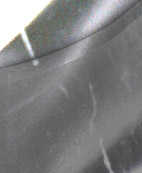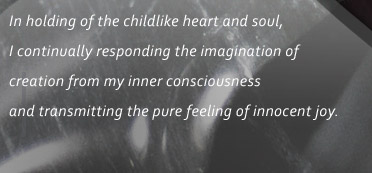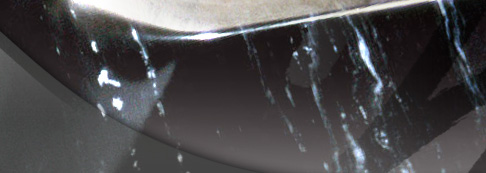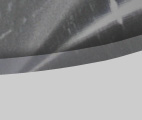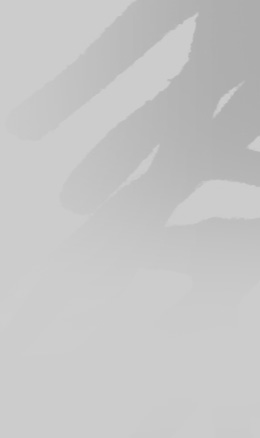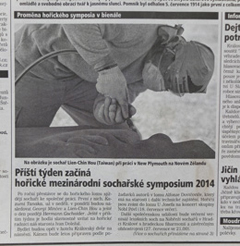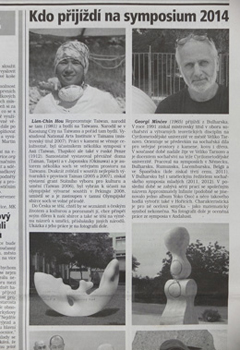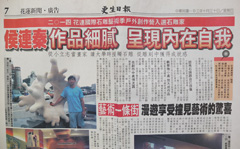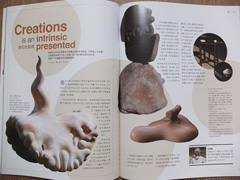The modern arts in Taiwan have tended to closely follow trends set in America and Japan¡OIt is as if art forms could succumb to external pressures like the garment industry¡Mwhere fashions are set by a few of the industry’s giants and followed by the masses of also-rans obliged to conform¡Mso that the fashionable are in fact those who follow trends set by others¡OBut this sort of art is not to be treasured for centuries¡Mbut watched¡Mas we watch a fashion parade¡Mwith little of the soul stirring that takes place when experiencing great art¡OFor art¡Mprecisely¡Mis engendered in that sacred precinct of genuine creativity and inspiring originality¡OIn Taiwan¡Mindividuality is just beginning to flower¡O
Although youthful¡Mvigorous¡Mand prosperous¡Mthe Taiwanese have become victims of an education system that seeks to produce high-wage earners rather than original thinkers¡OIn the arts¡Mthe emphasis is on mastery of techniques¡Mnot composition or inspired performances¡OIn music¡Mfor example¡Mdozens of youngsters each year amaze Western musicians with their stunning technical skills and note-perfect playing¡Ðyet with little empathy for the music itself¡OThat is because the arts are often treated like gymnastics¡Ðplayed to perfection and performed to win prizes¡O
Yet Hou Lien-chin¡Ma promising young sculptor who just graduated from college¡Mcertainly seems to have come from another world¡Man alien time zone where beauty is not outmoded¡Mand enchantment no stranger¡OHis works simply glow in joyous celebration of grace¡Melegance¡Mhumor¡Mand wit¡OThe pieces selected for his first exhibition in Taichung¡Mheld in April¡Mdisplay a dazzling mastery of solids¡Mplanes¡Mand surfaces¡Mand a sheer daring in the pursuit of simplicity¡OOne hardly believes these to be the work of a diffident youth doing his first graduate course at the Tainan National College of the Arts¡Ma spawning ground for many of the major luminaries of the arts¡Mwho have been quietly lifting the cultural profile of Taiwan onto the international stage¡O
Traditionally¡Msculpture as a genre has not been as powerful of a creative phenomenon in Pacific-rim cultures like China¡MJapan or Korea¡OBut it has thrived in cultures of the Aegean¡Mlike the Cycladic islands and later the mainland of Greece centering on Athens where stone sculpture reached its apogee early¡Mattaining ease and fluidity in the round¡Mas well as becoming a palpable conveyor of motion and emotions¡OTo this day¡MEuropeans walking the streets¡Mlet alone going into cathedrals or museums¡Mare profoundly familiar with images of solid forms moving in space¡O
Among the peoples of the Pacific¡Martists have focused more on painting over flat surfaces by concentrating intensely on the line as it moves across a plane¡OWhat one might call sculpture in Asia has tended to be markedly frontal¡Mflat¡Mbased as it were on placing a painted image in solid form¡Ðsimply extending its lateral dimension¡Mso we have Shang Dynasty figurines that look like cookie press-outs¡Mthe Easter Island faces on standing slabs¡Mand native American totems as low-and high-relief carvings¡OThere is no interest in expressing ¡]or perceiving¡^a solid¡Mthree-dimensional form twirling in or moving through space¡OEven the realistic phases of Buddhist sculptures will grant faces and garment folds their concavities¡Mbut rarely acknowledge flutters in the wind¡O
Thus¡Mit is all the more extraordinary to find a young Taiwanese artist¡Mwho has been primarily exposed to frontal figures dominating the altars of temples and the rigidly frontal sculptures of political figures¡Mso innately fascinated by the movement of solid forms¡O
Hou Lien-chin was born into the family of a Kaohsiung factory worker in 1981¡OAs a child he admired the sculptures of Michelangelo he had seen in art book and marine forms he would find in books and on television programs¡OThis filled him with a longing to learn to dive and enter the mysterious world under the sea¡Mfilled as it is with forms moving and turning in multiple layers¡OIn his university days at the Taiwan University of Arts in Banciao¡MHou worked on sculpture¡Mand watched with admiration as some recent graduates from the graduate institute in Tainan turned hard marble into liquid-like forms¡OThis spurred him on to engage in an intense exploration of soft¡Mflowing forms that move in space¡OThe age of mass media and instant imagetransfer across nations has enabled a young Taiwanese man to experience the vitality of stones in motion without having to live in Florence¡O
Less than one meter in length or width¡Meach piece exudes a monumental feel and aura¡OMost are shiny and smooth ¡Mwith sleekness glistening in curved abstractions that at the same time evoke a sense of being in the moment¡OThe marble is of different grades of black and white¡Msome with grains and streams that insist on being heard¡OIndeed¡Mthey playfully creep along or stretch out over the slick surfaces¡Mas if to tease¡OThe magic of these creations is their ability to “change form”as the viewer takes in the piece from every angle¡OBut once off the artist’s bench ¡Mgood artworks all assume a life of their own and will inspire awe with their brilliance¡Mtrigger heart-warming mirth¡Mor sweep the viewer into as yet unknown meditative depths¡O
¡©Lift¡ª¡Mon one piece of coral pink¡Ma small handle rises up shyly from a thick liquid flow¡Mbringing up with it the dark veins that slither across the comfortably smooth surface¡OThe base is free form¡Mlike pancake batter just ladled onto a hot pan¡Mspreading but keeping its surface tension¡Mrising up at the peripheries¡OOne cannot help but think of coral because of the colors of the glowing aurora marble¡O
¡©Marine Memories¡ª¡Ma self-hugging white oval piece with ears(or arms)¡Min all its introversion¡Mseems to burst with irrepressible joy¡OTight like a clam¡Mthe subtle twists and turns push and swell with unequal tension in several directions¡Mresonating with the undulating seafloor beneath¡OFrom one end¡Mwe see an eared¡Mpregnant oval with protruding ends¡Mfrom another the stress moves in another direction¡Mreshaping the bulges¡OFrom the short end the oval becomes a sphere¡O
The early works evoke slithering marine imagery¡OA particularly lovely example of this is a plump curved duffle-bag-like work on white marble with bursts of gossamer veins erupting on its surface¡OThe center of both sides indents coyly with a frond-like apron¡OThis part is grainy to the touch and ticklish¡O
Hou has moved increasingly away from identifiable visual sources¡O¡©Fold¡ª¡Ma black monumental form that is definitely not of the marine domain comes across more as a love song of flat and curved planes¡Mof straight and bent silhouettes¡Man intertwined duet between a squeezed cylinder and a slab¡OThe challenges notwithstanding¡Mthe result is sleek elegance and graceful simplicity¡OHere white veins again flash like lightning¡Mchallenging the disciplined surface¡OThis dichotomy between form and material offers Hou a distinct challenge that will be fascinating to follow in the future¡O
In his earlier oeuvre¡Mfinished in 2002 and 2003¡MHou gently evoked marine life¡OAlthough already abstract¡Mwhere inherent forms outweigh the marine image to which they may owe their origins¡Mthe early works are not entirely free of external formal influence¡OThey still depended on mimesis of a sort¡O
But once in Tainan¡MHou has been moving away from even these subtlest of links with natural forms to deal directly and purely with formal¡Mplanar¡Mand tactile relationships per se¡OHe grapples now with the quintessence of the art of sculpture in its purest and highest expression¡OThe agile and sensitive creativity of Hou flies alone¡Munaided¡Minto the loftiest realms of art¡OAnd the result is astounding¡O
¡©Birth¡ª¡Ma large black-grained block of foursquare solid marble appears to rupture in the middle¡Mas unstoppable flows of soft¡Mmagma-like mass erupt from within¡Mforcing the block to arch upward in the middle¡O
The dynamics ride on tensions between soft and hard¡Mbetween straight and bent¡Mbetween curved and flat planes¡Malways teasing the viewer’s perception of solid stone¡Mgiving it life¡Meven liquidity¡Mmovement¡Mand humor¡OHere viewer and artist are immersed in the basics of sculpture¡Gline¡Mplane¡Mtexture¡Mcolor¡Mand movement¡OWe feel the movement engendered by their slightest shift¡OBut these living sensory experiences are transmitted only when an artist of genius comes along to release the myriad potentials hidden in solid stone¡O
A huggable white furry form reveals pits and spikes and glistens with tiny crystals¡OThe stones is blazingly white without a single spot of color¡OLike freshly fallen snow on a little mound¡Mthe introverted form invites our touch¡OOne stroke leads to another and surprises are revealed¡OThe hand moves inward to feel the bottom and the surface down there is perfectly smooth¡O
Hou does not seem to fear the unknown¡OHe clearly appears to delight in the exploration of new dimensions¡OHow is it possible in this period of trend-following for a man of Hou’s delicate sensibilities to thrive¡Mone may ask¡OGenius is an answer¡Mbut more than that¡Mgenius is liberated only when the artist remains deaf to outside noises¡Mdeeply fascinated by¡Mand more than satisfied with¡Mthe ever-expanding horizons within¡O
Joan Stanley-Baker is Britain Oxford University MLitt DPhil and a emeritus professor at the Institute of Art History and Art Criticism of Tainan National College of the Arts¡O |






